Astronomy 210 Quiz 5, fall semester 2011
Cuesta College, San Luis Obispo, CA
A star cluster containing white dwarfs would also have:
(A) medium-mass main sequence stars.
(B) massive protostars.
(C) red dwarfs.
(D) supergiants.
Correct answer: (C).
White dwarfs are the end-stage of medium-mass stars, so medium-mass main sequence stars cannot be in the same star cluster as white dwarfs. Supergiants are the end-stages of the massive stars; while massive protostars are the start of massive stars, and as they evolve much more quickly than medium-mass stars, they cannot be in the same star cluster as white dwarfs. Red dwarfs are the main sequence stage of low-mass stars, and as they evolved much slower from protostar to main sequence stars, they are the most plausible of the given choices to be found in the same star cluster as white dwarfs.
Section 70158
Exam code: quiz05SpRn
(A) : 15 students
(B) : 5 students
(C) : 6 students
(D) : 6 students
(No response: 1 student)
Success level: 25% (including partial credit for multiple-choice)
Discrimination index (Aubrecht & Aubrecht, 1983): 0.33
Section 70160
Exam code: quiz05nUc7
(A) : 9 students
(B) : 3 students
(C) : 11 students
(D) : 4 students
Success level: 45% (including partial credit for multiple-choice)
Discrimination index (Aubrecht & Aubrecht, 1983): 0.46
20111031
20111030
Astronomy quiz question: giant energy source
Astronomy 210 Quiz 5, fall semester 2011
Cuesta College, San Luis Obispo, CA
The energy source in the core of a giant is:
(A) hydrogen fusion.
(B) gravitational contraction.
(C) fusion of elements heavier than hydrogen.
(D) radioactive decay.
(E) (Does not produce energy.)
Correct answer: (C).
A giant is a medium-mass star that has converted all of the hydrogen in its core to helium at the end of its main sequence lifetime. After a brief intermediate stage where energy is produced by hydrogen fusion in a shell surrounding its core, energy is then produced in the core by the fusion of helium into carbon.
Section 70158
Exam code: quiz05SpRn
(A) : 18 students
(B) : 0 students
(C) : 13 students
(D) : 0 students
(E) : 2 students
Success level: 45% (including partial credit for multiple-choice)
Discrimination index (Aubrecht & Aubrecht, 1983): 0.22
Cuesta College, San Luis Obispo, CA
The energy source in the core of a giant is:
(A) hydrogen fusion.
(B) gravitational contraction.
(C) fusion of elements heavier than hydrogen.
(D) radioactive decay.
(E) (Does not produce energy.)
Correct answer: (C).
A giant is a medium-mass star that has converted all of the hydrogen in its core to helium at the end of its main sequence lifetime. After a brief intermediate stage where energy is produced by hydrogen fusion in a shell surrounding its core, energy is then produced in the core by the fusion of helium into carbon.
Section 70158
Exam code: quiz05SpRn
(A) : 18 students
(B) : 0 students
(C) : 13 students
(D) : 0 students
(E) : 2 students
Success level: 45% (including partial credit for multiple-choice)
Discrimination index (Aubrecht & Aubrecht, 1983): 0.22
20111029
Astronomy quiz archive: stellar evolution
Astronomy 210 Quiz 5, fall semester 2011
Cuesta College, San Luis Obispo, CA
Section 70158, version 1
Exam code: quiz05SpRn


Section 70158
Cuesta College, San Luis Obispo, CA
Section 70158, version 1
Exam code: quiz05SpRn


Section 70158
Quiz 5 results (max score = 40):
0- 8.0 :
8.5-16.0 : ********** [low = 9.5]
16.5-24.0 : ******** [mean = 21.3 +/- 7.5]
24.5-32.0 : ************
32.5-40.0 : *** [high = 33.0]
20111028
Astronomy quiz question: red dwarf energy source
Astronomy 210 Quiz 5, fall semester 2011
Cuesta College, San Luis Obispo, CA
The energy source in the core of a red dwarf is:
(A) hydrogen fusion.
(B) gravitational contraction.
(C) fusion of elements heavier than hydrogen.
(D) radioactive decay.
(E) (Does not produce energy.)
Correct answer: (A).
A red dwarf is a low-mass main sequence star, which produces energy from fusing hydrogen into helium during its (extremely long) main sequence lifetime.
Section 70160
Exam code: quiz05nUc7
(A) : 15 students
(B) : 1 student
(C) : 3 students
(D) : 3 students
(E) : 5 students
Success level: 61% (including partial credit for multiple-choice)
Discrimination index (Aubrecht & Aubrecht, 1983): 0.73
Cuesta College, San Luis Obispo, CA
The energy source in the core of a red dwarf is:
(A) hydrogen fusion.
(B) gravitational contraction.
(C) fusion of elements heavier than hydrogen.
(D) radioactive decay.
(E) (Does not produce energy.)
Correct answer: (A).
A red dwarf is a low-mass main sequence star, which produces energy from fusing hydrogen into helium during its (extremely long) main sequence lifetime.
Section 70160
Exam code: quiz05nUc7
(A) : 15 students
(B) : 1 student
(C) : 3 students
(D) : 3 students
(E) : 5 students
Success level: 61% (including partial credit for multiple-choice)
Discrimination index (Aubrecht & Aubrecht, 1983): 0.73
Astronomy quiz archive: stellar evolution
Astronomy 210 Quiz 5, fall semester 2011
Cuesta College, San Luis Obispo, CA
Section 70160, version 1
Exam code: quiz05nUc7


Section 70160
Cuesta College, San Luis Obispo, CA
Section 70160, version 1
Exam code: quiz05nUc7


Section 70160
Quiz 5 results (max score = 40):
0- 8.0 : ** [low = 7.0]
8.5-16.0 : **
16.5-24.0 : *****
24.5-32.0 : ********* [mean = 26.9 +/- 9.2]
32.5-40.0 : ********* [high = 40.0]
20111027
Online reading assignment question: Milky Way tags
Astronomy 210 Reading Assignment 9, fall semester 2011
Cuesta College, San Luis Obispo, CA
 111027-milkywaywordle
111027-milkywaywordle
http://www.flickr.com/photos/waiferx/6287121530/
Originally uploaded by Waifer X
Wordle.net tag cloud for "Milky Way," generated by responses from Astronomy 210 students at Cuesta College, San Luis Obispo, CA (http://www.wordle.net/show/wrdl/4312349/Untitled).
Students have a weekly online reading assignment (hosted by SurveyMonkey.com), where they answer questions based on reading their textbook, material covered in previous lectures, opinion questions, and/or asking (anonymous) questions or making (anonymous) comments. Full credit is given for completing the online reading assignment before next week's lecture, regardless if whether their answers are correct/incorrect. Selected results/questions/comments are addressed by the instructor at the start of the following lecture.
Write down five words that describe or are associated with the "Milky Way." Keep word phrases together with no spaces between them (e.g., "forexample, likethis, nospaces"). (Graded for completion.)
[Responses have been edited to consolidate related common subjects.]
Student responses
Sections 70158, 70160
Cuesta College, San Luis Obispo, CA
 111027-milkywaywordle
111027-milkywaywordlehttp://www.flickr.com/photos/waiferx/6287121530/
Originally uploaded by Waifer X
Wordle.net tag cloud for "Milky Way," generated by responses from Astronomy 210 students at Cuesta College, San Luis Obispo, CA (http://www.wordle.net/show/wrdl/4312349/Untitled).
Students have a weekly online reading assignment (hosted by SurveyMonkey.com), where they answer questions based on reading their textbook, material covered in previous lectures, opinion questions, and/or asking (anonymous) questions or making (anonymous) comments. Full credit is given for completing the online reading assignment before next week's lecture, regardless if whether their answers are correct/incorrect. Selected results/questions/comments are addressed by the instructor at the start of the following lecture.
Write down five words that describe or are associated with the "Milky Way." Keep word phrases together with no spaces between them (e.g., "forexample, likethis, nospaces"). (Graded for completion.)
[Responses have been edited to consolidate related common subjects.]
Student responses
Sections 70158, 70160
galaxy spiral allaroundus halo nuclearbulge
diskcomponent, spiralarms, halo, nuclearbulge, darkmatter.
greatstarsystem, Cepheids, propermotions, halo, disk
spiralgalaxy, candybar, 9byold, SagittariusA, Sun
milkyroad, foggy, diameter100000ly, 13.2byold, spiral
clusters, stars, Sun, spiralgalaxy, oursunislocatedonthesideofit.
notquitesurehowtoanswerthis
spiralgalaxy, candybar, 9byold, SagittariusA, nuclearbulge
spiralgalaxy, diameter100000ly, spiralarms, oldastheuniverse, 200billionstars
nightskyglowingbandstars
dust, supernova, hydrogen, helium, iron.
halo metals clusters stars galaxy
milky vast habitated beautiful home
galaxy, solarsystem, spiralgalaxy, celestialsphere, stars.
galaxy, solarsystem, candybar stars
havenoidea
white, stars, cluttered, band, line
milkyroad, nuclearbulge, spiralarms, sphericalcomponent, rotationcurve.
beautiful, enormous, stars, spiral, solarsystem
BigDipper, blackhole, celestialobject, clusters, comets
spiralgalaxy, 13.2byold, SagittariusA, disk, stars dust
stars galaxy spiral dust cloudy
clusterofstars particles spiral.
caramel chocolate milky quick cheap
planets stars comets asteroids
greatrift, spiralarms, halo, disk, darkmatter
barredspiralgalaxy, darkmatter, supermassiveblackhole, gammaraybubbles, binarysystem
billionsandbillions viagalactica supermassiveblackhole spiralarms home
candybar, galaxy, stars, bright
clockwise galaxy dusty spiral large
delicious, chocolate, caramel, bitesized, candy
birdspath, roadtoSantiago, silverriver, rivertoheaven, starryway
lotsofdifferentvarietieofstars
hazyband, solarsystem, galaxy, barredspiral, darknebulae
galaxy solarsystem dimglow
thisisreallyweirdwow
vast candy Earth galaxy pretty
200billionstars, localgroup, Galileodiscovered, supermassiveblackhole SagittariusA, alwaysonthemove
peanuts, caramel, chocolate, darkchocolate MilkyWayMidnights, nougat
supermassiveblackhole spiral beautiful incomprehensible immense
cloudy, big, chocolate, bright, preferSnickers
ourcluster spiral candy disk
clustersofstars, swirlsoflightinthesky, galaxy, candybar, MilkyWay
Labels:
Milky Way,
online reading assignment,
wordle
20111025
Astronomy current events question: warmer/wetter Mars evidence
Astronomy 210L, fall semester 2011
Cuesta College, San Luis Obispo, CA
Students are assigned to read online articles on current astronomy events, and take a short current events quiz during the first 10 minutes of lab. (This motivates students to show up promptly to lab, as the time cut-off for the quiz is strictly enforced!)
(A) look-back time photons.
(B) polar ice reflections.
(C) a Russian probe that returned.
(D) a meteorite that originated.
(E) surface gamma-ray emissions.
Correct answer: (D)
Student responses
Sections 70178, 70186, 70200
(A) : 2 students
(B) : 6 students
(C) : 2 students
(D) : 31 students
(E) : 5 students
Cuesta College, San Luis Obispo, CA
Students are assigned to read online articles on current astronomy events, and take a short current events quiz during the first 10 minutes of lab. (This motivates students to show up promptly to lab, as the time cut-off for the quiz is strictly enforced!)
Astronomy.com editors, "Caltech Researchers Take the Temperature of Mars' Past," October 17, 2011Researchers at the California Institute of Technology analyzed __________ from Mars to provide evidence that Mars was warmer and wetter in its past.
http://astronomy.com/en/News-Observing/News/2011/10/Caltech%20researchers%20take%20the%20temperature%20of%20Mars%20past.aspx
(A) look-back time photons.
(B) polar ice reflections.
(C) a Russian probe that returned.
(D) a meteorite that originated.
(E) surface gamma-ray emissions.
Correct answer: (D)
Student responses
Sections 70178, 70186, 70200
(A) : 2 students
(B) : 6 students
(C) : 2 students
(D) : 31 students
(E) : 5 students
Astronomy current events question: dark matter survey
Astronomy 210L, fall semester 2011
Cuesta College, San Luis Obispo, CA
Students are assigned to read online articles on current astronomy events, and take a short current events quiz during the first 10 minutes of lab. (This motivates students to show up promptly to lab, as the time cut-off for the quiz is strictly enforced!)
(A) matter-antimatter annihilations.
(B) cosmic background radiation distortions.
(C) distant galaxies images distorted by gravity.
(D) concentrations of dark energy.
(E) pockets of empty, but energetic space.
Correct answer: (C)
Student responses
Sections 70178, 70186, 70200
(A) : 2 students
(B) : 3 students
(C) : 28 students
(D) : 5 students
(E) : 6 students
Cuesta College, San Luis Obispo, CA
Students are assigned to read online articles on current astronomy events, and take a short current events quiz during the first 10 minutes of lab. (This motivates students to show up promptly to lab, as the time cut-off for the quiz is strictly enforced!)
Astronomy.com editors, "Hubble Survey Carries Out a Dark Matter Census," October 13, 2011The NASA/ESA Hubble Space is surveying the presence of dark matter by looking for:
http://astronomy.com/en/News-Observing/News/2011/10/Hubble%20survey%20carries%20out%20a%20dark%20matter%20census.aspx
(A) matter-antimatter annihilations.
(B) cosmic background radiation distortions.
(C) distant galaxies images distorted by gravity.
(D) concentrations of dark energy.
(E) pockets of empty, but energetic space.
Correct answer: (C)
Student responses
Sections 70178, 70186, 70200
(A) : 2 students
(B) : 3 students
(C) : 28 students
(D) : 5 students
(E) : 6 students
Astronomy current events question: past impact on Iapetus?
Astronomy 210L, fall semester 2011
Cuesta College, San Luis Obispo, CA
Students are assigned to read online articles on current astronomy events, and take a short current events quiz during the first 10 minutes of lab. (This motivates students to show up promptly to lab, as the time cut-off for the quiz is strictly enforced!)
(A) Iapetus' equatorial "walnut" ridge.
(B) Saturn's outermost ring.
(C) the nucleus of comet Elenin (C/2010 X1).
(D) minute amounts of dark matter.
(E) Iapetus' thick methane atmosphere.
Correct answer: (A)
Student responses
Sections 70178, 70186, 70200
(A) : 39 students
(B) : 4 students
(C) : 1 student
(D) : 1 student
(E) : 0 students
Cuesta College, San Luis Obispo, CA
Students are assigned to read online articles on current astronomy events, and take a short current events quiz during the first 10 minutes of lab. (This motivates students to show up promptly to lab, as the time cut-off for the quiz is strictly enforced!)
Robert T. Gonzalez, "Astronomers Say Saturn’s Moon Iapetus May Have Once Had a Mini-moon All Its Own," October 17, 2011Researchers at the Southwest Research Institute have hypothesized that a past impact on Saturn's moon, Iapetus, may have created:
http://io9.com/5848485/astronomers-say-saturns-moon-iapetus-may-have-once-had-a-mini+moon-all-its-own
(A) Iapetus' equatorial "walnut" ridge.
(B) Saturn's outermost ring.
(C) the nucleus of comet Elenin (C/2010 X1).
(D) minute amounts of dark matter.
(E) Iapetus' thick methane atmosphere.
Correct answer: (A)
Student responses
Sections 70178, 70186, 70200
(A) : 39 students
(B) : 4 students
(C) : 1 student
(D) : 1 student
(E) : 0 students
20111023
Physics presentation: torque and rotations
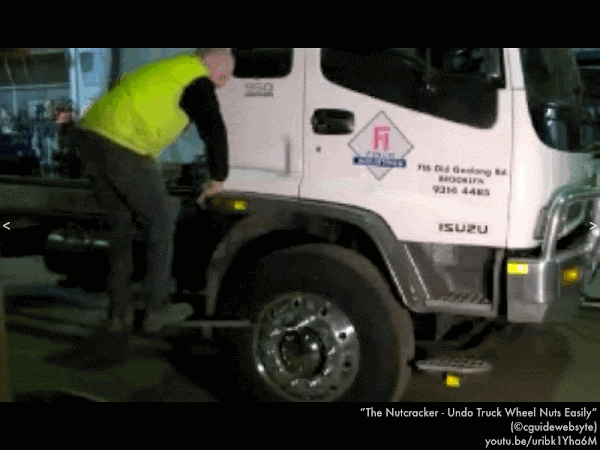
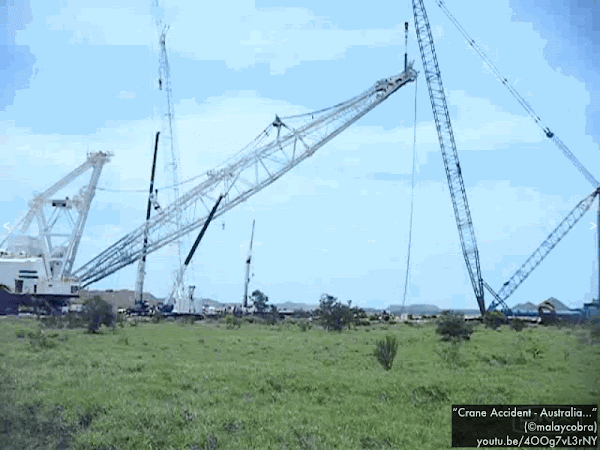
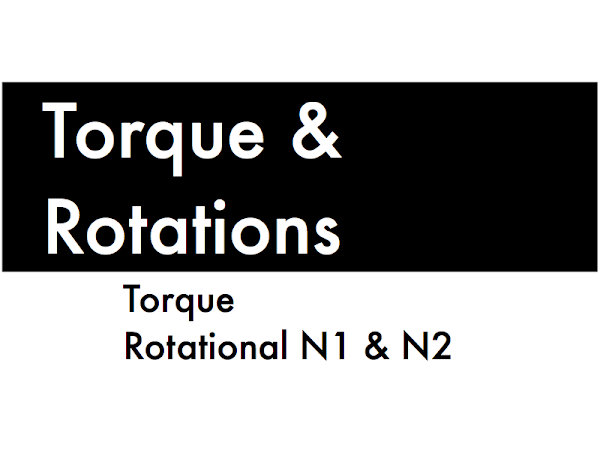
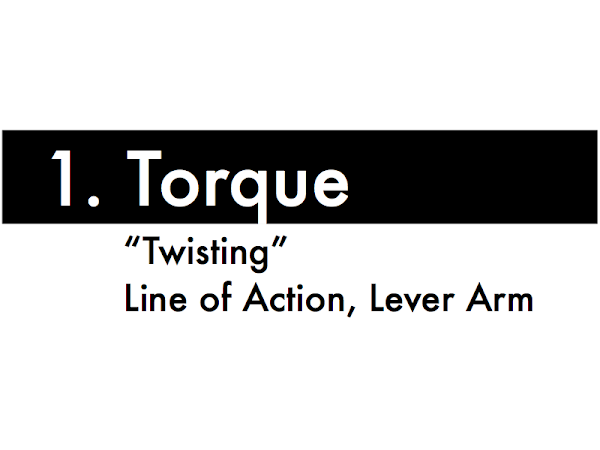
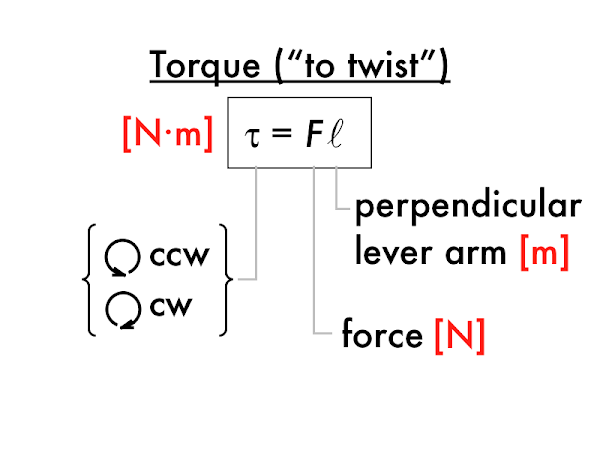

Extend a line along this force vector--this is the line of action, which is just a guide to find the perpendicular lever arm, which starts at the pivot point, and at the other end must intersect the line of action perpendicularly. In this case (but not always) the perpendicular lever arm corresponds to the physical object. The magnitude of the torque is the product of the lever arm distance (in m), and the magnitude of the force (in N). Since this force would rotate the object counterclockwise, then this is a counterclockwise torque.
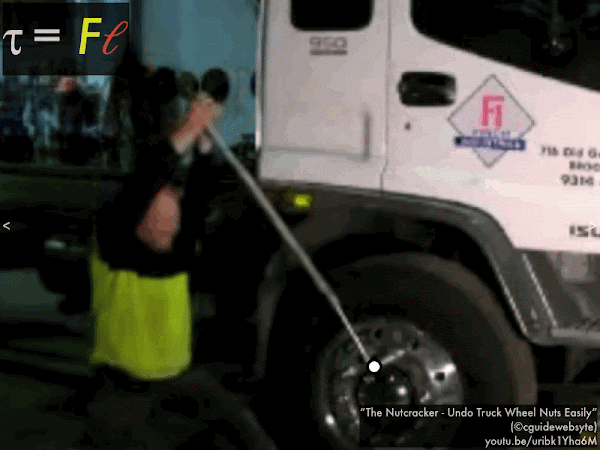
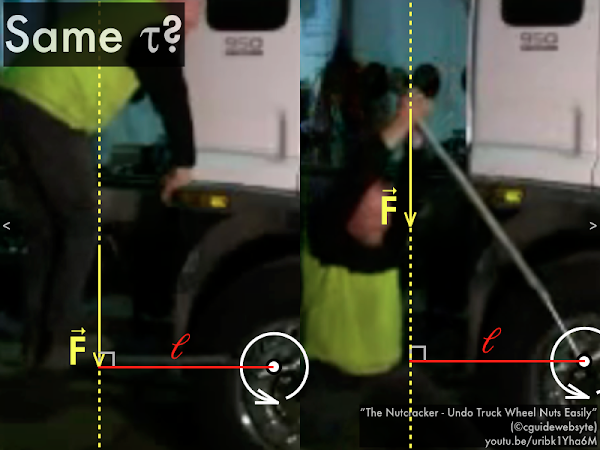
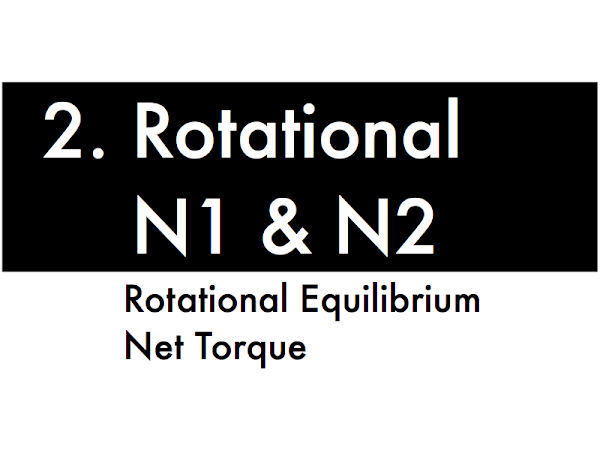
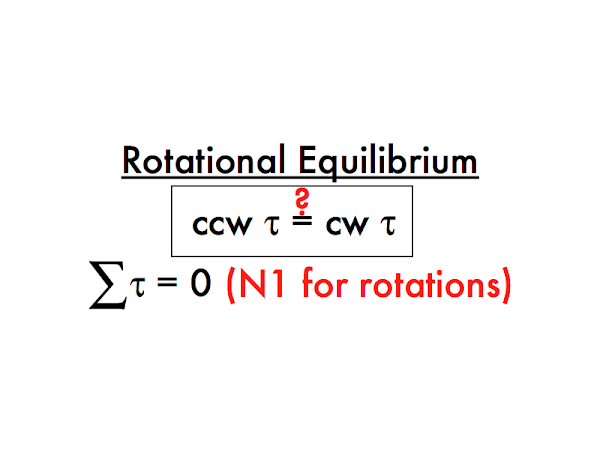
Similarly there is also a Newton's first law for rotational motion, where all of the counterclockwise torques on an object would be balanced by all of the clockwise torques on an object, such that the object would either be stationary, or have a constant rotational motion. This is the equivalent statement of saying that all the torques acting on that object add up to zero.
If you are looking forward to a career in structural engineering, then welcome to the rest of your life--keeping buildings and other structures from collapsing is all about getting the torques (and forces) to balance out (or sum to zero). Good times.

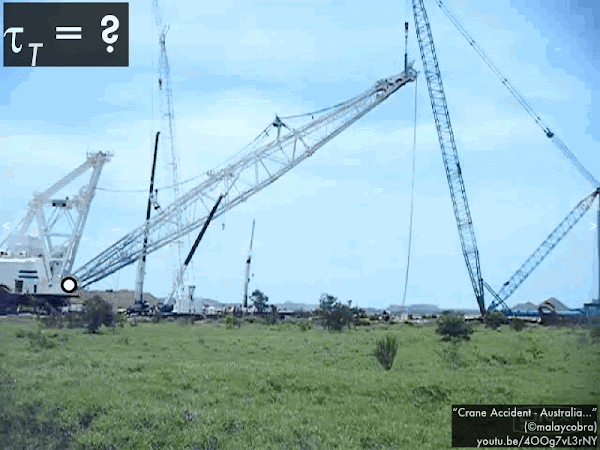

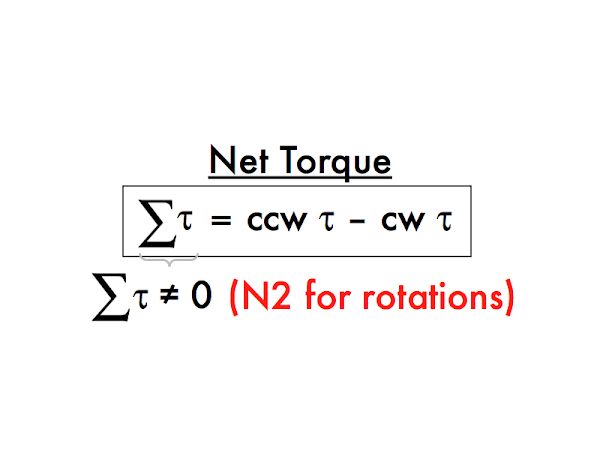

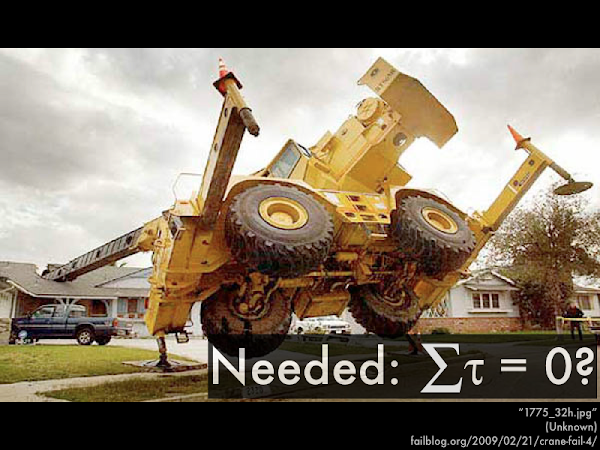
Labels:
forces,
lever arm,
net torque,
Newton's laws,
presentation,
rotation,
static equilibrium,
tension,
torque,
weight
20111022
Physics quiz question: work done on diagonally-pulled crate
Physics 205A Quiz 4, fall semester 2011
Cuesta College, San Luis Obispo, CA
Cf. Giambattista/Richardson/Richardson, Physics, 2/e, Problem 6.1
 A rope that makes an angle of 35° above the horizontal drags a crate at constant speed across a floor that is not frictionless. The magnitude of the work done by friction on the crate is __________ the magnitude of the work done by the rope on the crate.
A rope that makes an angle of 35° above the horizontal drags a crate at constant speed across a floor that is not frictionless. The magnitude of the work done by friction on the crate is __________ the magnitude of the work done by the rope on the crate.
(A) less than.
(B) equal to.
(C) greater than.
(D) (Not enough information is given.)
Correct answer (highlight to unhide): (B)
Starting with the the energy balance equation:
Wnc = ∆KEtr + ∆PEgrav + ∆PEelas,
where ∆KEtr = 0 (crate is being dragged at constant speed), ∆PEgrav = 0 (crate moves across a horizontal floor), and ∆PEelas = 0 (no springs are involved), then:
Wnc = 0.
The vertical forces that act on the crate are weight (downwards) and the normal force of the floor (upwards), but since these are perpendicular to the displacement of the crate, each of these forces do zero work on the crate.
The horizontal kinetic friction force does negative work on the crate (as the angle between that force and displacement is 180°, where cos(180°) = –1), while the rope does positive work on the crate (as the angle between that force and displacement is 35°, where cos(35°) is a positive quantity).
However, since the net external work done on the crate is zero, then the (negative) work done by friction on the crate must have the same magnitude as the (positive) work done by the rope on the crate:
Wnc = 0,
Wfriction + Wrope = 0.
Sections 70854, 70855
Exam code: quiz04iMpL
(A) : 31 students
(B) : 16 students
(C) : 4 students
(D) : 0 students
Success level: 31%
Discrimination index (Aubrecht & Aubrecht, 1983): 0.36
Cuesta College, San Luis Obispo, CA
Cf. Giambattista/Richardson/Richardson, Physics, 2/e, Problem 6.1
 A rope that makes an angle of 35° above the horizontal drags a crate at constant speed across a floor that is not frictionless. The magnitude of the work done by friction on the crate is __________ the magnitude of the work done by the rope on the crate.
A rope that makes an angle of 35° above the horizontal drags a crate at constant speed across a floor that is not frictionless. The magnitude of the work done by friction on the crate is __________ the magnitude of the work done by the rope on the crate. (A) less than.
(B) equal to.
(C) greater than.
(D) (Not enough information is given.)
Correct answer (highlight to unhide): (B)
Starting with the the energy balance equation:
Wnc = ∆KEtr + ∆PEgrav + ∆PEelas,
where ∆KEtr = 0 (crate is being dragged at constant speed), ∆PEgrav = 0 (crate moves across a horizontal floor), and ∆PEelas = 0 (no springs are involved), then:
Wnc = 0.
The vertical forces that act on the crate are weight (downwards) and the normal force of the floor (upwards), but since these are perpendicular to the displacement of the crate, each of these forces do zero work on the crate.
The horizontal kinetic friction force does negative work on the crate (as the angle between that force and displacement is 180°, where cos(180°) = –1), while the rope does positive work on the crate (as the angle between that force and displacement is 35°, where cos(35°) is a positive quantity).
However, since the net external work done on the crate is zero, then the (negative) work done by friction on the crate must have the same magnitude as the (positive) work done by the rope on the crate:
Wnc = 0,
Wfriction + Wrope = 0.
Sections 70854, 70855
Exam code: quiz04iMpL
(A) : 31 students
(B) : 16 students
(C) : 4 students
(D) : 0 students
Success level: 31%
Discrimination index (Aubrecht & Aubrecht, 1983): 0.36
Physics quiz question: spring-launched box, sliding up ramp
Physics 205A Quiz 4, fall semester 2011
Cuesta College, San Luis Obispo, CA
Cf. Giambattista/Richardson/Richardson, Physics, 2/e, Problem 6.63
 A 0.25 kg box is held against a spring that is compressed by 0.10 m. The box is released, and slides up a ramp to a height of 0.70 m above the base of the ramp. Neglect friction and drag. Before the box was released, the elastic potential energy stored in the spring was:
A 0.25 kg box is held against a spring that is compressed by 0.10 m. The box is released, and slides up a ramp to a height of 0.70 m above the base of the ramp. Neglect friction and drag. Before the box was released, the elastic potential energy stored in the spring was:
(A) 0.0013 J.
(B) 0.088 J.
(C) 0.25 J.
(D) 1.7 J.
Correct answer (highlight to unhide): (D)
Starting with the the energy balance equation:
Wnc = ∆KEtr + ∆PEgrav + ∆PEelas,
where Wnc = 0 (no external gains/losses of mechanical energy) and ∆KEtr = 0 (as the box is initially held stationary, and again momentarily stationary at its highest point on the ramp) then:
0 = ∆PEgrav + ∆PEelas,
0 = m·g·∆(y) + (1/2)·k·∆(x2),
0 = m·g·(yf – y0) + (1/2)·k·(xf2 – x02).
With initial parameters of y0 = 0 (initial elevation) and x0 = –0.10 m (compressed from equilibrium), and final parameters yf = +0.70 m (higher final elevation) and xf = 0 (spring relaxed after launching the box), then:
0 = m·g·(yf – 0) + (1/2)·k·(02 – x02),
0 = m·g·yf – (1/2)·k·x02.
Since the spring strength k is not given, but the mass m of the box is given, the initial elastic potential energy (the second term) cannot be directly calculated, but can be indirectly solved for, as it must be equal to the final gravitational potential energy (the first term):
(1/2)·k·x02 = m·g·yf,
(1/2)·k·x02 = (0.25 kg)·(9.80 m/s2)·(+0.70 m) = 1.715 J,
or to two significant figures, the elastic potential energy that was stored in the spring was 1.7 J.
(Response (A) is (1/2)·m·(xi)2, response (B) is (1/2)·m·yf, response (C) is m·g·x0.)
Sections 70854, 70855
Exam code: quiz04iMpL
(A) : 1 student
(B) : 8 students
(C) : 12 students
(D) : 30 students
Success level: 59%
Discrimination index (Aubrecht & Aubrecht, 1983): 0.73
Cuesta College, San Luis Obispo, CA
Cf. Giambattista/Richardson/Richardson, Physics, 2/e, Problem 6.63
 A 0.25 kg box is held against a spring that is compressed by 0.10 m. The box is released, and slides up a ramp to a height of 0.70 m above the base of the ramp. Neglect friction and drag. Before the box was released, the elastic potential energy stored in the spring was:
A 0.25 kg box is held against a spring that is compressed by 0.10 m. The box is released, and slides up a ramp to a height of 0.70 m above the base of the ramp. Neglect friction and drag. Before the box was released, the elastic potential energy stored in the spring was:(A) 0.0013 J.
(B) 0.088 J.
(C) 0.25 J.
(D) 1.7 J.
Correct answer (highlight to unhide): (D)
Starting with the the energy balance equation:
Wnc = ∆KEtr + ∆PEgrav + ∆PEelas,
where Wnc = 0 (no external gains/losses of mechanical energy) and ∆KEtr = 0 (as the box is initially held stationary, and again momentarily stationary at its highest point on the ramp) then:
0 = ∆PEgrav + ∆PEelas,
0 = m·g·∆(y) + (1/2)·k·∆(x2),
0 = m·g·(yf – y0) + (1/2)·k·(xf2 – x02).
With initial parameters of y0 = 0 (initial elevation) and x0 = –0.10 m (compressed from equilibrium), and final parameters yf = +0.70 m (higher final elevation) and xf = 0 (spring relaxed after launching the box), then:
0 = m·g·(yf – 0) + (1/2)·k·(02 – x02),
0 = m·g·yf – (1/2)·k·x02.
Since the spring strength k is not given, but the mass m of the box is given, the initial elastic potential energy (the second term) cannot be directly calculated, but can be indirectly solved for, as it must be equal to the final gravitational potential energy (the first term):
(1/2)·k·x02 = m·g·yf,
(1/2)·k·x02 = (0.25 kg)·(9.80 m/s2)·(+0.70 m) = 1.715 J,
or to two significant figures, the elastic potential energy that was stored in the spring was 1.7 J.
(Response (A) is (1/2)·m·(xi)2, response (B) is (1/2)·m·yf, response (C) is m·g·x0.)
Sections 70854, 70855
Exam code: quiz04iMpL
(A) : 1 student
(B) : 8 students
(C) : 12 students
(D) : 30 students
Success level: 59%
Discrimination index (Aubrecht & Aubrecht, 1983): 0.73
Physics quiz question: Ford Mustang GT Premium kinetic energy
Physics 205A Quiz 4, fall semester 2011
Cuesta College, San Luis Obispo, CA
Cf. Giambattista/Richardson/Richardson, Physics, 2/e, Problem 6.17
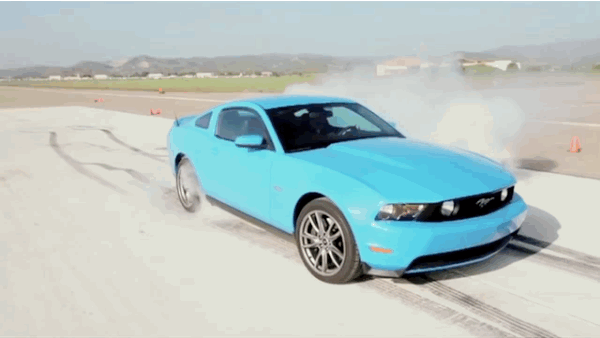
Motor Trend Channel
youtu.be/ydykiWKW6fE
A 2011 Ford Mustang GT Premium (mass 1,640 kg) takes 10.3 s to accelerate from rest to 45.0 m/s on a horizontal track[*]. What is the final kinetic energy of this car?
(A) 7.38×104 J.
(B) 7.23×105 J.
(C) 7.60×105 J.
(D) 1.66×106 J.
[*] motortrend.com/roadtests/coupes/112_1003_2011_ford_mustang_gt_premium_test/viewall.html.
Correct answer (highlight to unhide): (D)
The final (translational) kinetic energy of the car is given by:
KEtr,f = (1/2)·m·(vf)2,
KEtr,f = (1/2)·(1,640 kg)·(45.0 m/s)2 = 1,660,500 J,
or to three significant figures, 1.66×106 J.
(Response (A) is m·vf, response (B) is m·g·vf, response (C) is m·vf·t.)
Sections 70854, 70855
Exam code: quiz04iMpL
(A) : 2 students
(B) : 7 students
(C) : 4 students
(D) : 38 students
Success level: 75%
Discrimination index (Aubrecht & Aubrecht, 1983): 0.64
Cuesta College, San Luis Obispo, CA
Cf. Giambattista/Richardson/Richardson, Physics, 2/e, Problem 6.17

Motor Trend Channel
youtu.be/ydykiWKW6fE
A 2011 Ford Mustang GT Premium (mass 1,640 kg) takes 10.3 s to accelerate from rest to 45.0 m/s on a horizontal track[*]. What is the final kinetic energy of this car?
(A) 7.38×104 J.
(B) 7.23×105 J.
(C) 7.60×105 J.
(D) 1.66×106 J.
[*] motortrend.com/roadtests/coupes/112_1003_2011_ford_mustang_gt_premium_test/viewall.html.
Correct answer (highlight to unhide): (D)
The final (translational) kinetic energy of the car is given by:
KEtr,f = (1/2)·m·(vf)2,
KEtr,f = (1/2)·(1,640 kg)·(45.0 m/s)2 = 1,660,500 J,
or to three significant figures, 1.66×106 J.
(Response (A) is m·vf, response (B) is m·g·vf, response (C) is m·vf·t.)
Sections 70854, 70855
Exam code: quiz04iMpL
(A) : 2 students
(B) : 7 students
(C) : 4 students
(D) : 38 students
Success level: 75%
Discrimination index (Aubrecht & Aubrecht, 1983): 0.64
Physics quiz question: rebounding truck crash
Physics 205A Quiz 4, fall semester 2011
Cuesta College, San Luis Obispo, CA
Cf. Giambattista/Richardson/Richardson, Physics, 2/e, Problem 7.7
MZBTZOO M
youtu.be/44UXH4AvOnY
An unmanned 2003 Ford Ranger XL Short Bed 2WD truck (mass 1,980 kg[*]) crashes into a stationary concrete wall at a speed of 11.0 m/s, and rebounds off the wall with a speed of 2.2 m/s in the opposite direction. The magnitude of the impulse exerted on the truck is:
(A) 4.4×103 N·s.
(B) 1.7×104 N·s.
(C) 2.18×104 N·s.
(D) 2.61×104 N·s.
[*] "Standard GVWR: 4360 lb," autos.msn.com/research/vip/spec_engines.aspx?year=2003&make=Ford&model=Ranger&trimid=95693.
Correct answer (highlight to unhide): (D)
The impulse J can be calculated as the initial-to-final change in momentum:
J = ∆p = m·∆v,
where ∆v = vf – v0.
The initial velocity vector is v0 = +11.0 m/s (traveling forwards in the +x direction), and the final velocity vector is vf = –2.2 m/s (rebounding in the reverse –x direction). Then:
J = (1,980 kg)·((–2.2 m/s) – (+11.0 m/s)) = (1,980 kg)·(–13.2 m/s) = –26,136 N·s,
or to two significant figures, the magnitude of the impulse is 2.61×104 N·s (and the "–" sign indicates that it is in the backwards –x direction).
(Response (A) is the magnitude of the initial momentum, response (B) is the magnitude of the final momentum, response (C) is (1,980 kg)((–2.2 m/s) + (+11.0 m/s)).)
Sections 70854, 70855
Exam code: quiz04iMpL
(A) : 1 student
(B) : 18 students
(C) : 11 students
(D) : 20 students
Success level: 32%
Discrimination index (Aubrecht & Aubrecht, 1983): 0.64
Cuesta College, San Luis Obispo, CA
Cf. Giambattista/Richardson/Richardson, Physics, 2/e, Problem 7.7
MZBTZOO M
youtu.be/44UXH4AvOnY
An unmanned 2003 Ford Ranger XL Short Bed 2WD truck (mass 1,980 kg[*]) crashes into a stationary concrete wall at a speed of 11.0 m/s, and rebounds off the wall with a speed of 2.2 m/s in the opposite direction. The magnitude of the impulse exerted on the truck is:
(A) 4.4×103 N·s.
(B) 1.7×104 N·s.
(C) 2.18×104 N·s.
(D) 2.61×104 N·s.
[*] "Standard GVWR: 4360 lb," autos.msn.com/research/vip/spec_engines.aspx?year=2003&make=Ford&model=Ranger&trimid=95693.
Correct answer (highlight to unhide): (D)
The impulse J can be calculated as the initial-to-final change in momentum:
J = ∆p = m·∆v,
where ∆v = vf – v0.
The initial velocity vector is v0 = +11.0 m/s (traveling forwards in the +x direction), and the final velocity vector is vf = –2.2 m/s (rebounding in the reverse –x direction). Then:
J = (1,980 kg)·((–2.2 m/s) – (+11.0 m/s)) = (1,980 kg)·(–13.2 m/s) = –26,136 N·s,
or to two significant figures, the magnitude of the impulse is 2.61×104 N·s (and the "–" sign indicates that it is in the backwards –x direction).
(Response (A) is the magnitude of the initial momentum, response (B) is the magnitude of the final momentum, response (C) is (1,980 kg)((–2.2 m/s) + (+11.0 m/s)).)
Sections 70854, 70855
Exam code: quiz04iMpL
(A) : 1 student
(B) : 18 students
(C) : 11 students
(D) : 20 students
Success level: 32%
Discrimination index (Aubrecht & Aubrecht, 1983): 0.64
Labels:
impulse,
mass,
momentum,
physics multiple-choice question,
velocity
Physics quiz question: pellet bouncing off of block
Physics 205A Quiz 4, fall semester 2011
Cuesta College, San Luis Obispo, CA
Cf. Giambattista/Richardson/Richardson, Physics, 2/e, Problem 7.49
(Ignore friction, drag, and other external forces during this brief collision.) A pellet moving to the right hits a motionless block, and the pellet bounces off to the left, while the block moves to the right. Based solely on the information given, __________ must be conserved.
(A) momentum.
(B) translational kinetic energy.
(C) (Both of the above choices.)
(D) (None of the above choices.)
Correct answer (highlight to unhide): (A)
Negligible net external force and brief time duration for this collision makes the external impulse on this system zero, such that momentum is conserved. Since the pellet bounces off of, instead of embedding itself into the block, this is not a completely inelastic collision, leaving two possibilities: a (partially) inelastic collision (such that translational kinetic energy is not conserved), or an elastic collision (such that translational kinetic energy is conserved). However, without additional information regarding the resulting permanent deformation (if any) of the pellet and/or block after the collision, only momentum can be said to be conserved.
Sections 70854, 70855
Exam code: quiz04iMpL
(A) : 33 students
(B) : 3 students
(C) : 14 students
(D) : 1 student
Success level: 65%
Discrimination index (Aubrecht & Aubrecht, 1983): 0.36
Cuesta College, San Luis Obispo, CA
Cf. Giambattista/Richardson/Richardson, Physics, 2/e, Problem 7.49
(Ignore friction, drag, and other external forces during this brief collision.) A pellet moving to the right hits a motionless block, and the pellet bounces off to the left, while the block moves to the right. Based solely on the information given, __________ must be conserved.
(A) momentum.
(B) translational kinetic energy.
(C) (Both of the above choices.)
(D) (None of the above choices.)
Correct answer (highlight to unhide): (A)
Negligible net external force and brief time duration for this collision makes the external impulse on this system zero, such that momentum is conserved. Since the pellet bounces off of, instead of embedding itself into the block, this is not a completely inelastic collision, leaving two possibilities: a (partially) inelastic collision (such that translational kinetic energy is not conserved), or an elastic collision (such that translational kinetic energy is conserved). However, without additional information regarding the resulting permanent deformation (if any) of the pellet and/or block after the collision, only momentum can be said to be conserved.
Sections 70854, 70855
Exam code: quiz04iMpL
(A) : 33 students
(B) : 3 students
(C) : 14 students
(D) : 1 student
Success level: 65%
Discrimination index (Aubrecht & Aubrecht, 1983): 0.36
Physics quiz question: coupled freight car and locomotive
Physics 205A Quiz 4, fall semester 2011
Cuesta College, San Luis Obispo, CA
Cf. Giambattista/Richardson/Richardson, Physics, 2/e, Problem 7.41
(Ignore friction, drag, and other external forces during this brief collision.) An empty freight car rolls along a straight level track, and collides with an initially stationary diesel locomotive, and couple (attach) together. Based solely on the information given, __________ must be conserved.
(A) momentum.
(B) translational kinetic energy.
(C) (Both of the above choices.)
(D) (None of the above choices.)
Correct answer (highlight to unhide): (A)
Negligible net external force and brief time duration for this collision makes the external impulse on this system zero, such that momentum is conserved. Since the freight car and locomotive "couple together," this is a completely inelastic collision, such that kinetic energy is not conserved.
Sections 70854, 70855
Exam code: quiz04iMpL
(A) : 41 students
(B) : 1 student
(C) : 6 students
(D) : 3 students
Success level: 80%
Discrimination index (Aubrecht & Aubrecht, 1983): 0.64
Cuesta College, San Luis Obispo, CA
Cf. Giambattista/Richardson/Richardson, Physics, 2/e, Problem 7.41
(Ignore friction, drag, and other external forces during this brief collision.) An empty freight car rolls along a straight level track, and collides with an initially stationary diesel locomotive, and couple (attach) together. Based solely on the information given, __________ must be conserved.
(A) momentum.
(B) translational kinetic energy.
(C) (Both of the above choices.)
(D) (None of the above choices.)
Correct answer (highlight to unhide): (A)
Negligible net external force and brief time duration for this collision makes the external impulse on this system zero, such that momentum is conserved. Since the freight car and locomotive "couple together," this is a completely inelastic collision, such that kinetic energy is not conserved.
Sections 70854, 70855
Exam code: quiz04iMpL
(A) : 41 students
(B) : 1 student
(C) : 6 students
(D) : 3 students
Success level: 80%
Discrimination index (Aubrecht & Aubrecht, 1983): 0.64
Physics quiz question: laboratory cart collision
Physics 205A Quiz 4, fall semester 2011
Cuesta College, San Luis Obispo, CA
Cf. Giambattista/Richardson/Richardson, Physics, 2/e, Problem 7.55
(Ignore friction, drag, and other external forces during this brief collision.) A laboratory cart moving to the right on a horizontal track collides elastically with a more massive cart moving to the left. Based solely on the information given, __________ must be conserved.
(A) momentum.
(B) kinetic energy.
(C) (Both of the above choices.)
(D) (None of the above choices.)
Correct answer (highlight to unhide): (C)
Negligible net external force and brief time duration for this collision makes the external impulse on this system zero, such that momentum is conserved. Since the carts are described as colliding elastically, then kinetic energy is also conserved.
Sections 70854, 70855
Exam code: quiz04iMpL
(A) : 2 students
(B) : 5 students
(C) : 44 students
(D) : 0 students
Success level: 86%
Discrimination index (Aubrecht & Aubrecht, 1983): 0.45
Cuesta College, San Luis Obispo, CA
Cf. Giambattista/Richardson/Richardson, Physics, 2/e, Problem 7.55
(Ignore friction, drag, and other external forces during this brief collision.) A laboratory cart moving to the right on a horizontal track collides elastically with a more massive cart moving to the left. Based solely on the information given, __________ must be conserved.
(A) momentum.
(B) kinetic energy.
(C) (Both of the above choices.)
(D) (None of the above choices.)
Correct answer (highlight to unhide): (C)
Negligible net external force and brief time duration for this collision makes the external impulse on this system zero, such that momentum is conserved. Since the carts are described as colliding elastically, then kinetic energy is also conserved.
Sections 70854, 70855
Exam code: quiz04iMpL
(A) : 2 students
(B) : 5 students
(C) : 44 students
(D) : 0 students
Success level: 86%
Discrimination index (Aubrecht & Aubrecht, 1983): 0.45
Physics quiz archive: energy conservation, momentum conservation
20111020
Physics presentation: collisions

 We'll be emphasizing how to categorize collisions into one of three types, and determining which conservation laws apply to these collision types.
We'll be emphasizing how to categorize collisions into one of three types, and determining which conservation laws apply to these collision types.




 Consider which conservation laws apply for these types of collisions.
Consider which conservation laws apply for these types of collisions.
- If two cars stick to each other in a completely inelastic collision, then they convert as much kinetic energy as they can into permanent deformation, so kinetic energy is definitely not conserved.
- If two cars deform and then rebound in a (partially) inelastic collision, then some kinetic energy goes into permanent deformation, while some of it is converted back to into kinetic energy (such that the cars will rebound off each other), so kinetic energy is also not conserved.
- If two cars deform, and rebound completely without any permanent damage in an elastic collision, then no kinetic energy is lost, so kinetic energy is conserved for this type of collision.
Let's practice categorizing collisions, and determining whether kinetic energy is conserved or not.

Answers (highlight to unhide): elastic; kinetic energy is conserved (ideally all of that energy went into temporarily "squishing" the bumper, which rebounded and returned that energy).

Answers (highlight to unhide): (partially) inelastic (the cars are separated after the collision); kinetic energy is not conserved (as some of that energy went into damaging the bumper).

Answers (highlight to unhide): completely inelastic (the truck is stuck to the collision barrier); kinetic energy is definitely not conserved (nearly all of that energy went into crumpling the front of the truck).
For this high-speed collision, ideally the vehicle crumple zones would absorb as much kinetic energy as possible, as opposed to the low-speed fender benders shown above, where the vehicle bumper would deform and rebound back, to minimize cosmetic damage.
 What about momentum conservation? If collisions occurred on frictionless roads, and/or the drivers did not apply their brakes, then momentum would be conserved with no external forces/impulses. However, let's limit our discussion to looking at the initial state just before a collision, and the final state just after the collision--since vehicle collisions happen in fractions of a second, even if the external friction forces are large, their impulse would be negligible due to the relatively brief time that collisions take place in, typically fractions of a second. Thus we can set the left-hand side of this equation equal to zero, and the two objects during a collision merely exchange momentum: whatever one object loses in momentum must correspond to an increase in the other object's momentum. Consider this next time you are about to get into an accident...
What about momentum conservation? If collisions occurred on frictionless roads, and/or the drivers did not apply their brakes, then momentum would be conserved with no external forces/impulses. However, let's limit our discussion to looking at the initial state just before a collision, and the final state just after the collision--since vehicle collisions happen in fractions of a second, even if the external friction forces are large, their impulse would be negligible due to the relatively brief time that collisions take place in, typically fractions of a second. Thus we can set the left-hand side of this equation equal to zero, and the two objects during a collision merely exchange momentum: whatever one object loses in momentum must correspond to an increase in the other object's momentum. Consider this next time you are about to get into an accident...
Let's take a look at more examples of brief collisions (such that momentum would be conserved), classify their collision type and consider whether kinetic energy is conserved or not.





20111019
Astronomy current events question: Vesta northern vs. southern hemispheres
Astronomy 210L, fall semester 2011
Cuesta College, San Luis Obispo, CA
Students are assigned to read online articles on current astronomy events, and take a short current events quiz during the first 10 minutes of lab. (This motivates students to show up promptly to lab, as the time cut-off for the quiz is strictly enforced!)
(A) Different color features.
(B) The number of craters per area.
(C) Warm thermal vents.
(D) Rotation rate fluctuations.
(E) Subterranean oceans.
Correct answer: (B)
Student responses
Sections 70178, 70186, 70200
(A) : 7 students
(B) : 33 students
(C) : 2 students
(D) : 1 student
(E) : 3 students
Cuesta College, San Luis Obispo, CA
Students are assigned to read online articles on current astronomy events, and take a short current events quiz during the first 10 minutes of lab. (This motivates students to show up promptly to lab, as the time cut-off for the quiz is strictly enforced!)
Astronomy.com editors, "Dawn at Vesta: Massive Mountains, Rough Surface, and Old-Young Dichotomy in Hemispheres," October 4, 2011__________ observed by the NASA Dawn spacecraft is evidence that the southern hemisphere of the asteroid Vesta may be much younger than its northern hemisphere.
http://www.astronomy.com/News-Observing/News/2011/10/Dawn%20at%20Vesta%20-%20massive%20mountains%20-%20rough%20surface%20-%20and%20old-young%20dichotomy%20in%20hemispheres.aspx
(A) Different color features.
(B) The number of craters per area.
(C) Warm thermal vents.
(D) Rotation rate fluctuations.
(E) Subterranean oceans.
Correct answer: (B)
Student responses
Sections 70178, 70186, 70200
(A) : 7 students
(B) : 33 students
(C) : 2 students
(D) : 1 student
(E) : 3 students
Astronomy current events question: 2011 Nobel Prize in Physics
Astronomy 210L, fall semester 2011
Cuesta College, San Luis Obispo, CA
Students are assigned to read online articles on current astronomy events, and take a short current events quiz during the first 10 minutes of lab. (This motivates students to show up promptly to lab, as the time cut-off for the quiz is strictly enforced!)
(A) speed of light is broken by neutrinos.
(B) expansion of the universe is accelerating.
(C) universe will not expand forever.
(D) cosmic background radiation is older than the universe itself.
(E) number of multiverses may be infinite.
Correct answer: (B)
Student responses
Sections 70178, 70186, 70200
(A) : 0 students
(B) : 43 students
(C) : 0 students
(D) : 3 students
(E) : 0 students
Cuesta College, San Luis Obispo, CA
Students are assigned to read online articles on current astronomy events, and take a short current events quiz during the first 10 minutes of lab. (This motivates students to show up promptly to lab, as the time cut-off for the quiz is strictly enforced!)
Kelly Beatty, "Three Cosmologists Share Nobel Prize," October 4, 2011Three astrophysicists shared the 2011 Nobel Prize in Physics for measuring type Ia supernovae brightnesses in distant galaxies to provide evidence that the:
http://www.skyandtelescope.com/news/131071118.html
(A) speed of light is broken by neutrinos.
(B) expansion of the universe is accelerating.
(C) universe will not expand forever.
(D) cosmic background radiation is older than the universe itself.
(E) number of multiverses may be infinite.
Correct answer: (B)
Student responses
Sections 70178, 70186, 70200
(A) : 0 students
(B) : 43 students
(C) : 0 students
(D) : 3 students
(E) : 0 students
Astronomy current events question: Earth's oceans from comets?
Astronomy 210L, fall semester 2011
Cuesta College, San Luis Obispo, CA
Students are assigned to read online articles on current astronomy events, and take a short current events quiz during the first 10 minutes of lab. (This motivates students to show up promptly to lab, as the time cut-off for the quiz is strictly enforced!)
(A) snowflake-like patterns of.
(B) water vapor jets from.
(C) hydrogen isotopes of.
(D) melting polar ice caps on.
(E) plankton and algae growth on.
Correct answer: (C)
Student responses
Sections 70178, 70186, 70200
(A) : 4 students
(B) : 5 students
(C) : 36 students
(D) : 1 student
(E) : 0 students
Cuesta College, San Luis Obispo, CA
Students are assigned to read online articles on current astronomy events, and take a short current events quiz during the first 10 minutes of lab. (This motivates students to show up promptly to lab, as the time cut-off for the quiz is strictly enforced!)
Charles Q. Choi, "Comets Created Earth's Oceans, Study Concludes," October 5, 2011The __________ comet Hartley 2 observed by the Herschel Space Observatory may be evidence that Earth's oceans came from comets.
http://www.space.com/13185-comets-water-earth-oceans-source.html
(A) snowflake-like patterns of.
(B) water vapor jets from.
(C) hydrogen isotopes of.
(D) melting polar ice caps on.
(E) plankton and algae growth on.
Correct answer: (C)
Student responses
Sections 70178, 70186, 70200
(A) : 4 students
(B) : 5 students
(C) : 36 students
(D) : 1 student
(E) : 0 students
20111018
Physics flashcard question: three thrown balls
Physics 205A, fall semester 2011
Cuesta College, San Luis Obispo, CA
Students were asked near the end of their learning cycle the following think-pair-share question, to be answered using flashcards.
 The ball thrown __________ would have more Ktr just before hitting the floor.
The ball thrown __________ would have more Ktr just before hitting the floor.
(A) upwards.
(B) downwards.
(C) to the right.
(D) (There is two-way tie.)
(E) (There is three-way tie.)
(F) (Unsure/guessing/lost/help!)
Sections 70854, 70855
(A) : 2 students (estimated)
(B) : 2 students (estimated)
(C) : 5 students (estimated)
(D) : 5 students (estimated)
(E) : 20 students (estimated)
(F) : 20 students (estimated)
Correct answer: (E)
From the energy balance equation:
Wnc = ∆Ktr + ∆Ugrav + ∆Uelas,
where Wnc = 0 (no external gains/losses of mechanical energy), and ∆Uelas = 0 (no springs involved), such that for all three balls,
0 = ∆Ktr + ∆Ugrav.
Each ball experiences the same initial-to-final loss of Ugrav, so they must experience the same increase in Ktr, and since they all have the same initial Ktr, then they will have the same final Ktr.
Cuesta College, San Luis Obispo, CA
Students were asked near the end of their learning cycle the following think-pair-share question, to be answered using flashcards.
 The ball thrown __________ would have more Ktr just before hitting the floor.
The ball thrown __________ would have more Ktr just before hitting the floor. (A) upwards.
(B) downwards.
(C) to the right.
(D) (There is two-way tie.)
(E) (There is three-way tie.)
(F) (Unsure/guessing/lost/help!)
Sections 70854, 70855
(A) : 2 students (estimated)
(B) : 2 students (estimated)
(C) : 5 students (estimated)
(D) : 5 students (estimated)
(E) : 20 students (estimated)
(F) : 20 students (estimated)
Correct answer: (E)
From the energy balance equation:
Wnc = ∆Ktr + ∆Ugrav + ∆Uelas,
where Wnc = 0 (no external gains/losses of mechanical energy), and ∆Uelas = 0 (no springs involved), such that for all three balls,
0 = ∆Ktr + ∆Ugrav.
Each ball experiences the same initial-to-final loss of Ugrav, so they must experience the same increase in Ktr, and since they all have the same initial Ktr, then they will have the same final Ktr.
Physics midterm question: cars braking
Physics 205A Midterm 1, fall semester 2011
Cuesta College, San Luis Obispo, CA
Cf. Giambattista/Richardson/Richardson, Physics, 2/e, Problems 2.11, 2.25
 [10 points.] Two cars are initially traveling side-by-side with the same speed in the forward direction along a straight horizontal road. Both cars apply their brakes at the same time, such that they slow down with different accelerations until they each come to a complete stop. Describe/show how the vx(t) graph at right should be changed such that it correctly describes this situation. Explain your reasoning by using the properties of position, displacement, velocity, and acceleration.
[10 points.] Two cars are initially traveling side-by-side with the same speed in the forward direction along a straight horizontal road. Both cars apply their brakes at the same time, such that they slow down with different accelerations until they each come to a complete stop. Describe/show how the vx(t) graph at right should be changed such that it correctly describes this situation. Explain your reasoning by using the properties of position, displacement, velocity, and acceleration.
Solution and grading rubric:
Grading distribution:
Sections 70854, 70855
Exam code: midterm01w4Sh
p: 48 students
r: 1 student
t: 3 students
v: 1 student
x: 0 students
y: 0 students
z: 0 students
A sample "p" response (from student 4816):
Another sample "p" response (from student 5950), showing some of the (identical) behavior of the cars before brakes were applied:
Yet another sample "p" response (from student 6666), with perhaps a more realistic depiction of deceleration due to anti-lock brakes:
Cuesta College, San Luis Obispo, CA
Cf. Giambattista/Richardson/Richardson, Physics, 2/e, Problems 2.11, 2.25
 [10 points.] Two cars are initially traveling side-by-side with the same speed in the forward direction along a straight horizontal road. Both cars apply their brakes at the same time, such that they slow down with different accelerations until they each come to a complete stop. Describe/show how the vx(t) graph at right should be changed such that it correctly describes this situation. Explain your reasoning by using the properties of position, displacement, velocity, and acceleration.
[10 points.] Two cars are initially traveling side-by-side with the same speed in the forward direction along a straight horizontal road. Both cars apply their brakes at the same time, such that they slow down with different accelerations until they each come to a complete stop. Describe/show how the vx(t) graph at right should be changed such that it correctly describes this situation. Explain your reasoning by using the properties of position, displacement, velocity, and acceleration. Solution and grading rubric:
- p = 10/10:
Correct. Describes/shows two lines with different slopes, with same initial velocity at same initial time, and zero velocities at different times. - r = 8/10:
As (p), but argument indirectly, weakly, or only by definition supports the statement to be proven, or has minor inconsistencies or loopholes. - t = 6/10:
Nearly correct, but argument has conceptual errors, or is incomplete. At least understands how initial and final velocity, acceleration and displacement information is represented on a vx(t) graph. - v = 4/10:
Limited relevant discussion of supporting evidence of at least some merit, but in an inconsistent or unclear manner. - x = 2/10:
Implementation/application of ideas, but credit given for effort rather than merit. - y = 1/10:
Irrelevant discussion/effectively blank. - z = 0/10:
Blank.
Grading distribution:
Sections 70854, 70855
Exam code: midterm01w4Sh
p: 48 students
r: 1 student
t: 3 students
v: 1 student
x: 0 students
y: 0 students
z: 0 students
A sample "p" response (from student 4816):

Another sample "p" response (from student 5950), showing some of the (identical) behavior of the cars before brakes were applied:

Yet another sample "p" response (from student 6666), with perhaps a more realistic depiction of deceleration due to anti-lock brakes:

Labels:
acceleration,
area,
displacement,
kinematics,
physics essay question,
slope,
velocity
Subscribe to:
Posts (Atom)


